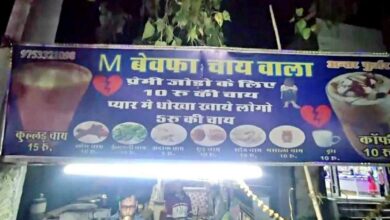Earned on the concern of reducing inflation?

The Reserve Bank of India did what it usually does in this situation. To curb inflation, it increased the policy interest rate (repo rate) and cash reserve ratio (CRR). To understand the repo rate and CRR in simple words, an increase in the repo rate means that taking loans will be expensive, this will reduce the demand for housing and vehicles. The increase in CRR means that banks will now have to keep more cash deposits with the Reserve Bank. This will reduce the liquidity in the market.
That is, the government is reducing demand by making loans expensive and by pulling cash from the market, forcing people to spend less. This is the classical way to reduce inflation. One way to reduce inflation can also be to increase the income of the people or to get money in their hands. But this method cannot be tried in the condition of the Indian economy. That’s when an attempt is being made to reduce inflation in a classical way by putting the growth rate at stake.
The Reserve Bank has increased the repo rate twice in the last one month, after which it has gone up to 4.90 percent. The central bank had hiked the repo rate by 0.40 per cent in an emergency meeting in April and has now decided to increase it by 0.50 per cent after the monetary review committee meeting to be held in two months. But this is not the final hike. In the next meeting, it will increase again and it is possible that in the current financial year i.e. 2022-23, it will increase by one percent. This will be because the Reserve Bank itself has admitted that inflation is not going to come under immediate control despite the increase in the interest rate.
RBI Governor Shaktikanta Das also raised the inflation rate after the second hike in interest rates. He said that the inflation rate in the current financial year will be 6.7 percent. Think, two months ago the Reserve Bank had estimated that the inflation rate in this financial year would be 5.7 percent. An increase of one percent in that estimate can be estimated as to what the inflation situation is going to be.
The Reserve Bank has fixed the inflation rate limit at two to four per cent and has fixed a scale of two per cent up and down. That is, inflation should be up to a maximum of six percent. Inflation has been above this limit for the last three months and is going to be above this limit for the whole financial year. Only then the Reserve Bank has no option but to continue increasing the repo rate without caring about the growth rate. However, it cannot be said that inflation will come under control only by raising the repo rate. The government will also have to support the Reserve Bank in reducing inflation.
The central government had recently reduced the excise duty on petroleum products by Rs. 9 and a half per liter. Apart from this, the prices of commercial LPG cylinders have also been reduced. If the government continues to take such steps, then the measures being taken by the Reserve Bank will also benefit more. Despite the increase in the price of crude oil in the international market, if the central government keeps its prices under control by cutting excise duty and also continues to restrict or limit the export of products like wheat, sugar, then the management of inflation will be little. will be easy.
Whatever measures will be taken by both the Reserve Bank and the Government of India together to control inflation, it will have a direct impact on the economy of the country. The slowdown in the growth rate has already started. The World Bank had earlier estimated that India’s growth rate would be 8.7 percent in the current financial year, which it has reduced to 7.5 percent. International rating agency Moody’s has also reduced India’s growth forecast to 8.8 percent from 9.1 percent. This figure may come down further as the international condition of the economy is also not very good. Rising inflation and strict monetary policy in America will affect India and other economies of the world. Recently, the international rating agency S&P has reduced the estimated rate of growth of the countries of the world. It has lowered the US growth forecast for the current fiscal from 3.2 per cent to 2.4 per cent. China’s growth forecast has also been reduced from 4.9 to 4.2 percent. Similarly, the growth rate of the Eurozone has been reduced from 3.3 to 2.7 percent.
Think, when the growth rate of the big countries of the world declines, how big an impact it will have on India! India is not a big exporter, but due to the slowdown in economic activities in the big countries of the world, India’s exports will also be less. This will affect the growth rate. Similarly, there is no emphasis on the war between Russia and Ukraine. The countries of America and Europe are assuming that the war can go on till the end of this year. If this happens, it will have an impact on the economy of the whole world. Both inflation and growth rate in India will be affected by this. The trend of decline in the value of Indian currency i.e. Rupee is not stopping. The price of one dollar has now reached close to Rs 78. Keep in mind that the bill of import in India is not decreasing because fuel is the top of the consumption goods in India, 80 percent of which India imports. On the contrary, India’s exports may be affected by the international situation. In such a situation, the increase in the value of the dollar against the rupee will affect India very badly.
Due to the corona epidemic in India’s economy, another change has been seen in the last two-three years. That change is that the inflation of goods has increased more than that of services. Just before the start of the Corona epidemic, the inflation rate of services was high and that of goods was low. But in the two years after Corona, the average inflation rate of services was 4.6 percent, while the average inflation rate of goods reached 6.2 percent. The reason for this is that during Corona there were more restrictions on services or people used them less. In comparison, the need of the goods was met in some way or the other. Even in commodities, the majority of the population of the country continued to buy essential commodities during Corona. This means that this inflation is of essential commodities and hence is going to bother the common people more. Only then the first priority of both the Reserve Bank and the Government of India should be to reduce inflation and increase the income of the people.






